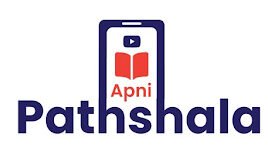GS Paper 2: Social Justice, Government Policies & Interventions, Issues Related to SCs & STs For Prelims:
For Mains:
|
Why in News?
Recent government data under the NAMASTE scheme from over 3,000 Urban Local Bodies (ULBs) shows that 92% of the 38,000 manual scavengers and hazardous sewer and septic tank workers belong to SC, ST, or OBC communities. This reveals occupational segregation based on caste and highlights the risks these workers face.
Key Definitions:
Manual Scavenger: Anyone employed to manually clean, carry, or handle human excreta from insanitary latrines, drains, pits, or railway tracks, as per the 2013 Prohibition of Employment as Manual Scavengers and their Rehabilitation Act (PEMSR).
Hazardous Cleaning: Cleaning of sewers or septic tanks without proper protective gear.
Sanitation Workers (Safai Karamcharis): Workers involved in sanitation tasks, including waste pickers and those cleaning sewers/septic tanks.
Sewer and Septic Tank Workers (SSWs): Workers involved in hazardous cleaning of sewers and septic tanks.
Sewer Entry Professionals (SEPs): Trained sanitation workers who clean sewers or septic tanks using proper safety measures.
About the NAMASTE Scheme:
Overview:
The National Action for Mechanised Sanitation Ecosystem (NAMASTE) is a joint initiative by the Ministry of Social Justice and Empowerment (MoSJE) and the Ministry of Housing and Urban Affairs (MoHUA) aimed at eradicating manual scavenging and promoting the safety of sanitation workers.
Budget: ₹349.70 crore, covering over 4,800 ULBs by 2025-26, replacing the earlier Self-Employment Scheme for Rehabilitation of Manual Scavengers (SRMS).
Objectives: Profiling Sewer/Septic Tank Workers (SSWs), offering them safety training, PPE kits, and health insurance under Ayushman Bharat PMJAY. It also aims to provide capital subsidies for turning SSWs into “sanipreneurs” and promoting self-employment.
Goals:
- Ensure worker safety.
- Eliminate fatalities in sanitation work.
- Improve the living and health conditions of sanitation workers.
- Between 2019 and 2023, 377 people died from hazardous sewer cleaning, per government data.
Progress of the NAMASTE Scheme:
- By September 2024, 3,326 ULBs had profiled about 38,000 SSWs.
- States like Kerala and Rajasthan have completed profiling, while others such as Andhra Pradesh and Uttar Pradesh are in the process.
Manual Scavenging:
- Definition: Removing human excreta by hand from sewers or septic tanks, banned under the PEMSR Act, 2013. The practice persists despite its illegality.
Government Efforts to Eliminate Manual Scavenging:
- Constitutional Safeguards:
Article 14: Equal protection of laws.
Article 16: Equal employment opportunities.
Article 17: Abolishes untouchability.
Article 21: Right to dignity.
Article 23: Protection against forced labour.
- Legal Framework:
The PEMSR Act, 2013 prohibits manual scavenging and calls for the rehabilitation of scavengers.
- Key Schemes:
- National Safai Karamcharis Finance and Development Corporation
- Swachh Bharat Mission 2.0
- SafaiMitra Suraksha Challenge
- Deendayal Antyodaya Yojana-National Urban Livelihoods Mission (DAY-NULM)
Caste-Based Occupation and Manual Scavenging:
- Social Discrimination: Dalits are often assigned to “polluting” tasks like manual scavenging due to caste hierarchy, which leads to marginalisation and limited alternatives.
Challenges in Abolition and Rehabilitation:
- Awareness Gaps: Many officials are unaware of who qualifies as a manual scavenger, resulting in underreported data.
- Underdeveloped Sewage Systems: Poor infrastructure perpetuates manual scavenging.
- Legal Enforcement Issues: Weak enforcement of existing laws contributes to the persistence of manual scavenging.
Way Forward:
- Rehabilitation Linked to Social Security Schemes: Linking manual scavengers to schemes like MGNREGA.
- Improved Coordination: A coordination committee involving key ministries for a unified approach.
- Investment in Technology: More funding for local authorities to procure advanced cleaning technologies to reduce manual intervention.
Explore our Books: https://apnipathshala.com/product-category/books/
Explore Our test Series: https://tests.apnipathshala.com/









